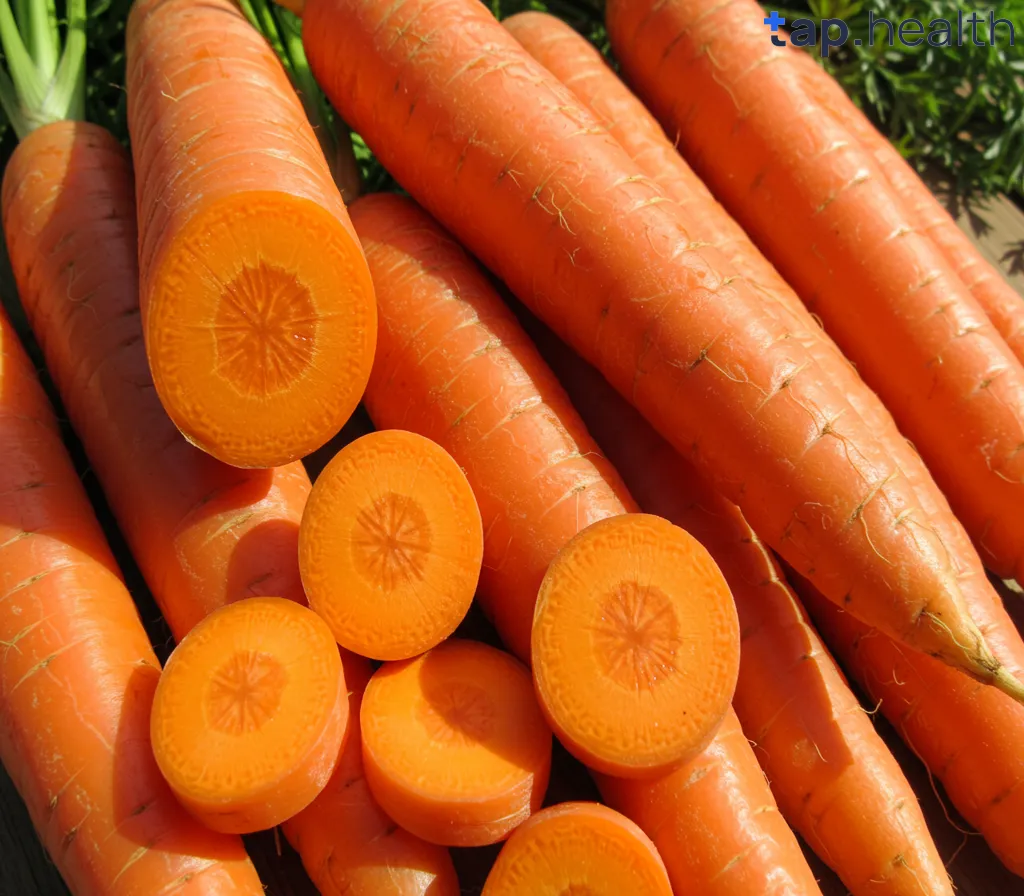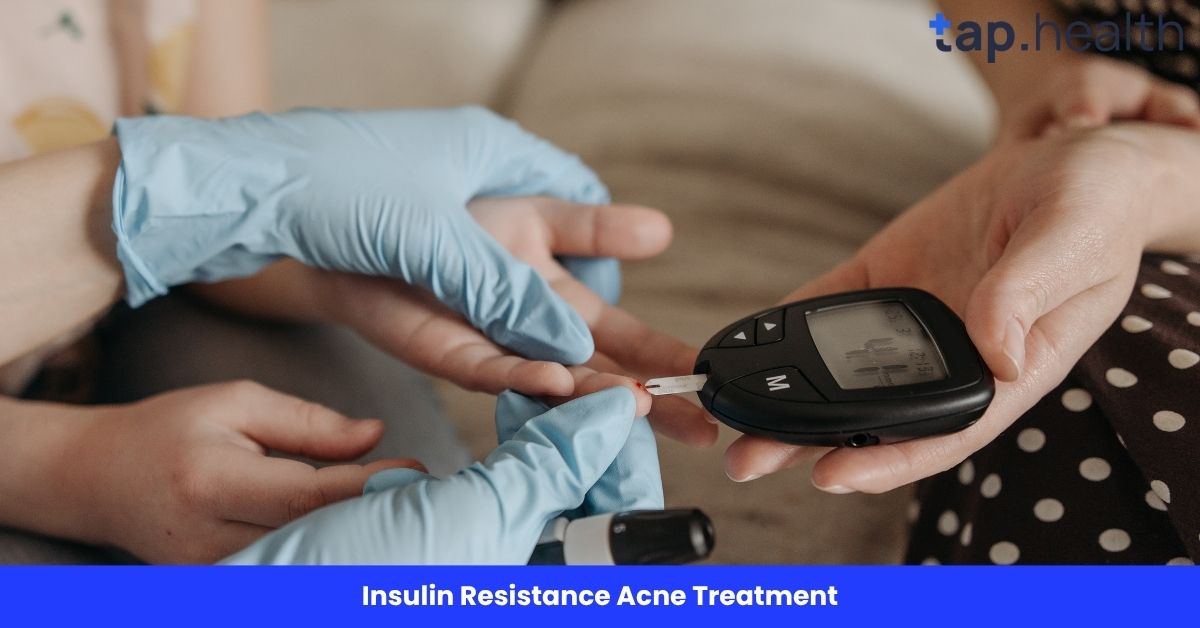If you’re managing diabetes, you probably pay close attention to every single thing you eat. It’s a constant balancing act of enjoying your food while keeping your blood sugar levels in check. Fruits and vegetables are supposed to be good for you, but then you hear whispers about some being “too sugary.” This brings us to a very common question: is it okay to eat raw carrots if you have diabetes?
The short answer is a big, resounding yes! Not only are raw carrots good for people with diabetes, but they can also be a fantastic addition to your diet.
But we know you need more than just a “yes” or “no.” You need to understand the “why” and the “how.” In this guide, we will walk you through everything you need to know about raw carrots and their place in a diabetes-friendly lifestyle. We’ll keep it simple, clear, and packed with all the information you need to feel confident about munching on this crunchy, delicious vegetable.
First Things First: Understanding the Nutrition in a Carrot
Before we dive into the deep end, let’s look at what’s actually inside a carrot. Knowing the nutritional facts is the first step in understanding how it affects your body, especially your blood sugar.
Carrots are what we call a non-starchy vegetable. This is great news because non-starchy vegetables are one of the best food groups you can eat for managing diabetes.
Here’s a simple breakdown of what you’ll find in one medium-sized raw carrot (about 61 grams):
- Calories: Around 25
- Carbohydrates: About 6 grams
- Fiber: Roughly 2 grams
- Sugar: About 3 grams
- Protein: 0.5 grams
- Vitamin A: Over 100% of your daily needs!
The two numbers that matter most for diabetes are carbohydrates and fiber. The carbohydrates are what your body turns into sugar, and the fiber is what helps slow down how quickly that sugar hits your bloodstream. With only 6 grams of carbs and a good amount of fiber, a carrot already looks like a pretty safe bet.
What is the Glycemic Index and Why Does it Matter for Carrots?
This is where things get really interesting. You’ve probably heard the term “Glycemic Index” or “GI” thrown around. It sounds complicated, but the idea is actually very simple.
The Glycemic Index (GI) is a scale from 0 to 100 that ranks foods based on how quickly they cause your blood sugar levels to rise after you eat them.
- High-GI foods (70-100): These are digested quickly and cause a rapid spike in blood sugar. Think white bread, sugary cereals, and potatoes.
- Medium-GI foods (56-69): These are in the middle.
- Low-GI foods (0-55): These are digested slowly, leading to a much smaller, slower rise in blood sugar. This is the sweet spot for people with diabetes.
So, where do raw carrots fall on this scale?
The Glycemic Index of Raw Carrots
Raw carrots have a Glycemic Index of about 16. That’s incredibly low! This officially places them in the “low-GI” food category.
What this means in plain English is that eating a raw carrot will not cause a sudden, sharp spike in your blood sugar. Instead, the natural sugars in the carrot are released into your bloodstream very slowly, giving your body plenty of time to handle it without getting overwhelmed. This is exactly what you want when you’re managing diabetes.
Raw Carrots vs. Cooked Carrots: Is There a Difference for Diabetes?
This is a fantastic question because how you prepare your food can sometimes change how your body processes it. This is definitely true for carrots.
While raw carrots are a clear winner, what happens when you cook them?
The Glycemic Index of Cooked Carrots
When you cook carrots, their cell walls break down, which makes the sugars inside them easier for your body to access. Because of this, the Glycemic Index of cooked carrots is higher than that of raw carrots.
The GI of cooked carrots is around 39.
Now, don’t panic! A GI of 39 is still comfortably in the “low-GI” category (which is anything below 55). So, even cooked carrots are a perfectly healthy and safe option for people with diabetes.
The Verdict: Which One is Better?
If you want to be extra careful and get the absolute best blood sugar response, raw carrots are slightly better. They have a lower GI and the fiber is more intact, which helps you feel full and slows down sugar absorption even more.
However, this doesn’t mean you should banish cooked carrots from your kitchen. Lightly steamed or roasted carrots are still a wonderful, nutrient-packed side dish. The key is to avoid boiling them for a long time until they are mushy, as this can raise the GI a bit more. Also, be mindful of what you cook them with. Roasting carrots in honey or a sugary glaze is obviously not a good idea. Stick to olive oil, herbs, and spices.
The Amazing Health Benefits of Carrots for People with Diabetes
We’ve established that raw carrots are safe for your blood sugar. But it gets even better. Carrots are packed with vitamins and minerals that offer some incredible health benefits, especially for people who are managing diabetes.
Fantastic for Your Eye Health
Diabetes can increase the risk of several eye problems, including a condition called diabetic retinopathy. This is where carrots truly shine. Carrots are famous for being rich in Beta-Carotene, which is the compound that gives them their bright orange color. When you eat a carrot, your body converts beta-carotene into Vitamin A.
Vitamin A is absolutely essential for good vision. It helps protect the surface of the eye (the cornea) and is a key component of rhodopsin, a protein in your eyes that allows you to see in low-light conditions. Getting enough Vitamin A can play a role in protecting your long-term eye health.
Great for Blood Sugar Regulation
Wait, can a food with sugar in it actually help regulate blood sugar? Yes, and the secret ingredient is fiber.
As we mentioned earlier, a medium carrot has about 2 grams of fiber. This might not sound like a lot, but it plays a huge role. The soluble fiber in carrots slows down the digestion of starches and sugars. This slow-and-steady release of sugar into your bloodstream prevents the dangerous spikes that you want to avoid. It also helps you feel fuller for longer, which can prevent overeating later.
A Friend to Your Heart
People with diabetes have a higher risk of heart disease and high blood pressure. Making heart-healthy food choices is a critical part of managing your overall health. Carrots can help here, too.
Carrots are a good source of potassium, a mineral that helps balance sodium levels in your body and relax your blood vessels. This can lead to lower, healthier blood pressure. Furthermore, the fiber in carrots can help lower cholesterol levels by binding with it in your digestive system and removing it from your body.
Helps with Healthy Weight Management
Maintaining a healthy weight is one of the most effective ways to manage type 2 diabetes. Carrots are the perfect food for this.
They are very low in calories (only 25 in a medium carrot) but high in water and fiber. This combination is a recipe for success. The fiber and water help you feel full and satisfied, so you’re less likely to reach for high-calorie, unhealthy snacks. Munching on raw carrot sticks is a much smarter choice than grabbing a bag of chips.
How Many Carrots Can a Diabetic Eat Safely?
This is a practical question that everyone wants to know. Since carrots are so healthy, can you just eat as many as you want?
The answer is all about moderation and portion control, which are the golden rules of any diabetes diet.
While a single carrot won’t cause any issues, eating a whole pound of carrots in one sitting would mean you’re consuming a lot more carbohydrates and sugar at once.
A Simple Guide to Portion Sizes
A good rule of thumb is to think of carrots as part of your non-starchy vegetable serving. The American Diabetes Association recommends using the “Diabetes Plate Method” for easy meal planning:
- Fill half of your plate with non-starchy vegetables. This is where carrots fit in perfectly! You can mix them with leafy greens, broccoli, bell peppers, and more.
- Fill one-quarter of your plate with lean protein (like chicken, fish, or beans).
- Fill the last quarter of your plate with carbohydrate foods (like brown rice, quinoa, or a small piece of fruit).
So, can a person with diabetes eat carrots every day? Absolutely. A serving of one or two medium carrots per day is perfectly reasonable and healthy. Just be sure to count them as part of your overall carbohydrate intake for the day.
Are There Any Potential Downsides to Eating Carrots?
Honestly, for people with diabetes, the list of downsides is incredibly short. The benefits far outweigh any potential risks.
The main “concern” people have is the sugar content, but as we’ve thoroughly explained, the natural sugar in carrots is bundled with so much fiber that its effect on your blood sugar is minimal.
The only other thing to be aware of is a harmless condition called carotenemia. If you eat an extremely large amount of carrots (we’re talking multiple pounds a day for weeks), the excess beta-carotene can cause your skin to take on a slightly yellowish or orange tint. It’s not dangerous and goes away once you cut back. But the amount of carrots you would need to eat for this to happen is far beyond a normal, healthy portion.
The most important thing is to focus on a varied and balanced diet. Don’t just eat carrots. Eat a rainbow of different vegetables to get a wide range of vitamins, minerals, and antioxidants.
Fun and Healthy Ways to Add Raw Carrots to Your Diet
Okay, so you’re convinced. Raw carrots are good for you. But eating plain carrot sticks every day can get a little boring. Let’s spice things up! Here are some creative, diabetes-friendly ways to enjoy raw carrots:
- The Classic Snack: Raw carrot sticks are great on their own, but even better with a healthy dip. Try them with hummus (which is also low-GI and full of fiber), a Greek yogurt-based dip with herbs, or some natural guacamole.
- Shredded in Salads: Don’t just toss in a few baby carrots. Use a grater to shred a whole carrot into your next green salad. It adds a wonderful sweetness, a satisfying crunch, and a beautiful pop of color.
- Carrot and Raisin Salad (The Healthy Way): The classic carrot and raisin salad is often loaded with mayonnaise and sugar. You can make a healthy version! Mix shredded carrots with a tablespoon of raisins (for sweetness), a handful of walnuts (for healthy fats), and a dressing made from Greek yogurt, a squeeze of lemon juice, and a pinch of cinnamon.
- Spiralized Carrot “Noodles”: Use a spiralizer to turn carrots into fun “noodles.” You can eat them raw as a base for a cold salad, topped with a light vinaigrette and some grilled chicken.
- Add to Smoothies: A small handful of raw carrots can be a great addition to a green smoothie. Just be sure to balance it out. A good diabetes-friendly smoothie might include spinach, half a carrot, a few berries, a scoop of protein powder, and unsweetened almond milk. The key is to include protein and healthy fats to slow down the absorption of any sugar.
Let’s Bust a Common Myth: “Carrots Are Full of Sugar”
This is probably the biggest myth that scares people with diabetes away from this amazing vegetable. Let’s put it to rest once and for all.
The Myth: Carrots are a sugary vegetable, just like candy, and should be avoided.
The Fact: This is completely false. It’s crucial to understand the difference between natural sugars found in whole foods and added sugars found in processed foods.
The 3-4 grams of sugar in a medium carrot are naturally occurring. They are packaged inside a fibrous, nutrient-dense plant matrix. That fiber, as we’ve discussed, is your best friend. It dramatically slows down how your body digests that sugar.
A can of soda, on the other hand, contains around 40 grams of added sugar with zero fiber. That sugar hits your bloodstream like a tidal wave. Comparing the sugar in a carrot to the sugar in a soda is like comparing a gentle stream to a tsunami. They are not the same thing.
So, the next time someone tells you that carrots are too sugary for a person with diabetes, you can confidently and politely tell them why that’s simply not true.
The Final Word on Raw Carrots and Diabetes
Let’s wrap it all up. Are raw carrots good for diabetes? Yes, they are not just good; they are excellent.
They are a low-calorie, low-carb, low-GI food that is packed with fiber and essential nutrients like Vitamin A. They won’t spike your blood sugar, and they can help with eye health, heart health, and weight management—all of which are incredibly important for living a healthy life with diabetes.
The key is to eat them as part of a balanced, colorful diet. Enjoy them raw for the biggest benefit, but don’t be afraid of lightly cooked carrots either. Practice portion control, listen to your body, and feel good about adding this wonderfully crunchy and sweet vegetable to your plate.
Frequently Asked Questions (FAQ) on Are Raw Carrots Good for Diabetes? Your Complete Guide
Can diabetics eat raw carrots every day?
Yes, absolutely. Eating one or two medium raw carrots a day is perfectly healthy for a person with diabetes. They are a non-starchy vegetable, and you should aim to fill half your plate with vegetables like carrots at every meal. Just be mindful of them as part of your total daily carbohydrate intake.
Do carrots raise your blood sugar?
All foods containing carbohydrates will raise your blood sugar to some degree, but carrots do so very slowly and minimally. Raw carrots have a very low Glycemic Index (around 16), which means they do not cause a sharp spike in blood sugar. The high fiber content helps to ensure the sugar is released slowly and steadily.
Are cooked carrots bad for diabetics?
No, cooked carrots are not bad for diabetics. While their Glycemic Index is slightly higher than raw carrots (around 39), it is still considered low. This means they are also a safe and healthy choice. To keep the GI as low as possible, it’s best to lightly steam or roast them rather than boiling them until they are mushy.
What is the best way to eat carrots for a diabetic?
The best way to eat carrots for maximum blood sugar control is raw. This preserves their fiber and gives them the lowest possible Glycemic Index. Pairing raw carrot sticks with a source of healthy fat or protein, like hummus or a handful of nuts, is an even better strategy, as it further slows down digestion.
How many carbs are in a raw carrot?
A medium-sized raw carrot (about 61 grams) contains approximately 6 grams of total carbohydrates. Of those 6 grams, about 2 grams come from fiber, which doesn’t raise blood sugar. This leaves only about 4 grams of “net carbs” per medium carrot, which is a very small amount.
Can a person with diabetes drink carrot juice?
This is where you need to be very careful. It is generally not recommended for people with diabetes to drink carrot juice. When you juice a carrot, you remove all of the beneficial fiber. What you’re left with is a concentrated source of sugar that can cause a very rapid spike in blood sugar. It takes several carrots to make one glass of juice, so you’re consuming the sugar of many carrots at once without any of the fiber to slow it down. It is always better to eat the whole carrot.



